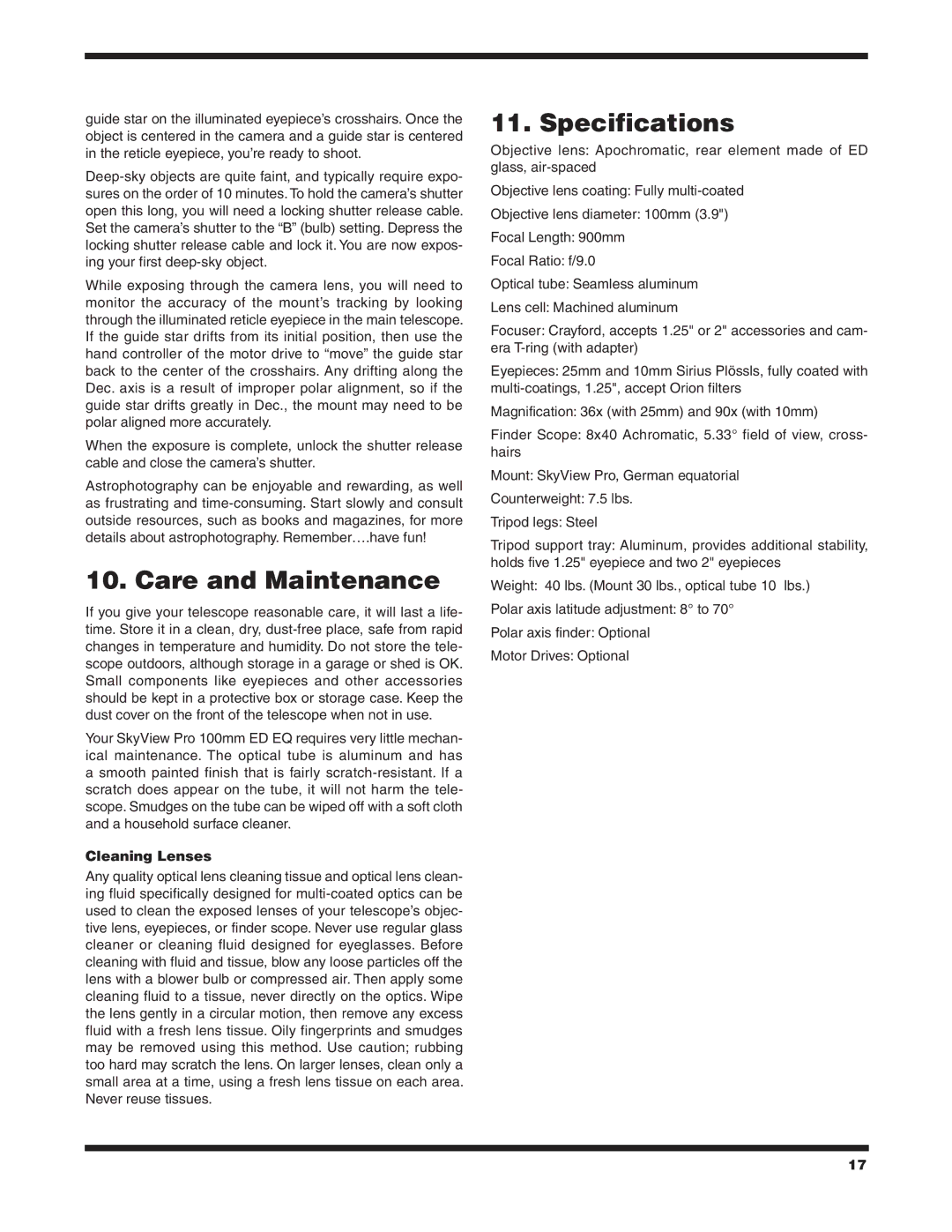
guide star on the illuminated eyepiece’s crosshairs. Once the object is centered in the camera and a guide star is centered in the reticle eyepiece, you’re ready to shoot.
While exposing through the camera lens, you will need to monitor the accuracy of the mount’s tracking by looking through the illuminated reticle eyepiece in the main telescope. If the guide star drifts from its initial position, then use the hand controller of the motor drive to “move” the guide star back to the center of the crosshairs. Any drifting along the Dec. axis is a result of improper polar alignment, so if the guide star drifts greatly in Dec., the mount may need to be polar aligned more accurately.
When the exposure is complete, unlock the shutter release cable and close the camera’s shutter.
Astrophotography can be enjoyable and rewarding, as well as frustrating and
10. Care and Maintenance
If you give your telescope reasonable care, it will last a life- time. Store it in a clean, dry,
Your SkyView Pro 100mm ED EQ requires very little mechan- ical maintenance. The optical tube is aluminum and has
asmooth painted finish that is fairly
Cleaning Lenses
Any quality optical lens cleaning tissue and optical lens clean- ing fluid specifically designed for
11. Specifications
Objective lens: Apochromatic, rear element made of ED glass,
Objective lens coating: Fully
Objective lens diameter: 100mm (3.9")
Focal Length: 900mm
Focal Ratio: f/9.0
Optical tube: Seamless aluminum
Lens cell: Machined aluminum
Focuser: Crayford, accepts 1.25" or 2" accessories and cam- era
Eyepieces: 25mm and 10mm Sirius Plössls, fully coated with
Magnification: 36x (with 25mm) and 90x (with 10mm)
Finder Scope: 8x40 Achromatic, 5.33° field of view, cross- hairs
Mount: SkyView Pro, German equatorial
Counterweight: 7.5 lbs.
Tripod legs: Steel
Tripod support tray: Aluminum, provides additional stability, holds five 1.25" eyepiece and two 2" eyepieces
Weight: 40 lbs. (Mount 30 lbs., optical tube 10 lbs.)
Polar axis latitude adjustment: 8° to 70°
Polar axis finder: Optional
Motor Drives: Optional
17
